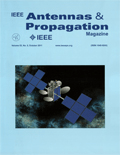
IEEE ANTENNAS AND PROPAGATION MAGAZINE
Scope & Guideline
Pioneering Research in Electromagnetic Theory and Applications
Introduction
Aims and Scopes
- Antenna Design and Characterization:
The journal emphasizes the design, modeling, and characterization of various types of antennas, including traditional and advanced structures such as metasurfaces, phased arrays, and flexible antennas. - Electromagnetic Theory and Applications:
It explores fundamental and advanced topics in electromagnetic theory, including computational methods, metamaterials, and their applications in diverse fields such as telecommunications and biomedical engineering. - Innovative Measurement Techniques:
The magazine covers advancements in measurement techniques for antennas, focusing on both theoretical and practical aspects of antenna testing and performance evaluation. - Emerging Technologies and Trends:
It highlights emerging technologies in antennas and propagation, including developments in 5G/6G communications, Internet of Things (IoT), and wearable devices, with a focus on their societal implications. - Historical Perspectives and Education:
The journal also delves into the historical evolution of antenna technology and aims to promote education and outreach in the field, particularly among young professionals and underrepresented groups.
Trending and Emerging
- Metamaterials and Metasurfaces:
Research on metamaterials and metasurfaces is gaining traction, with a focus on their applications in antenna design, beamforming, and electromagnetic manipulation, showcasing their potential to revolutionize the field. - 5G and Beyond Technologies:
There is a strong emphasis on technologies related to 5G and upcoming 6G networks, including millimeter-wave antennas and beam steering techniques, reflecting the industry's push for faster and more reliable communication. - Biomedical Applications:
The integration of antennas in biomedical applications, such as wearable health monitoring devices and imaging systems, is emerging as a significant area of interest, highlighting the intersection of technology and health. - Artificial Intelligence in Antenna Design:
The application of artificial intelligence and machine learning techniques in optimizing antenna designs and performance is becoming increasingly prominent, indicating a trend towards data-driven methodologies. - Sustainable and Eco-Friendly Designs:
There is a growing interest in sustainable antenna designs, including the development of eco-friendly materials and energy-efficient systems, in alignment with global sustainability goals.
Declining or Waning
- Basic Antenna Theory and Fundamentals:
There is a noticeable reduction in papers focused solely on basic antenna theory and fundamental concepts, as research increasingly emphasizes advanced applications and technology-driven designs. - Traditional Antenna Types:
The coverage of traditional antenna types, such as simple dipoles or monopoles, has decreased in favor of more complex and innovative designs, indicating a shift towards modern applications. - Standards and Regulatory Discussions:
Discussions surrounding regulatory standards and compliance have become less frequent, potentially due to a focus on more innovative topics and methodologies that drive cutting-edge research.
Similar Journals
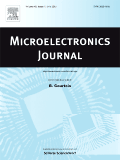
MICROELECTRONICS JOURNAL
Transforming Ideas into Breakthroughs in MicroelectronicsMICROELECTRONICS JOURNAL, published by Elsevier Sci Ltd since 1974, serves as a pivotal platform for disseminating cutting-edge research in the realms of microelectronics, nanotechnology, and materials science. With editions spanning from 1974 to 2024, the journal is well-respected within the scientific community, boasting a strong presence in key categories such as Atomic and Molecular Physics, Condensed Matter Physics, and Electrical and Electronic Engineering, as evidenced by its Q3 ranking in 2023. Researchers and professionals engaged in the exploration of electronic materials, optical applications, and nanoscale innovations can greatly benefit from the journal's insights, which situate their work within a robust academic framework. Although the journal does not currently offer open access, its rigorous peer-review process and high visibility in Scopus rankings—including a percentile ranking of 58th in Condensed Matter Physics—make it an essential resource for anyone looking to stay at the forefront of advancements in microelectronics and related fields.

Advances in Radio Science
Advancing Knowledge in Electrical EngineeringAdvances in Radio Science, published by COPERNICUS GESELLSCHAFT MBH, is a leading open-access journal established in 2003, dedicated to the rapid dissemination of high-quality research in the field of radio science, particularly focusing on advancements in electrical and electronic engineering. With an ISSN of 1684-9965 and an E-ISSN of 1684-9973, this journal is indexed and provides an avenue for researchers to contribute to the latest developments and innovations within the domain. Despite its current Q4 ranking in the Electrical and Electronic Engineering category, its commitment to open access ensures that all published articles are freely available to a global audience, fostering collaboration and knowledge sharing among engineers, researchers, and students alike. Situated in Göttingen, Germany, the journal continues to evolve and expand its reach, with content converging until 2024, emphasizing its relevance in a rapidly changing technological landscape. Whether you're a seasoned researcher or an emerging scholar, Advances in Radio Science invites you to explore the frontiers of radio science and contribute to its growing body of knowledge.
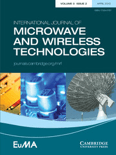
International Journal of Microwave and Wireless Technologies
Fostering Collaboration in Wireless Communication Research.International Journal of Microwave and Wireless Technologies is a leading academic journal published by Cambridge University Press, dedicated to the advancement of knowledge in the fields of microwave and wireless technologies. Since its inception in 2009, this journal has established itself as a crucial platform for researchers, professionals, and students involved in Electrical and Electronic Engineering, currently positioned in the Q3 quartile as per the 2023 category rankings. With an ISSN of 1759-0787 and an E-ISSN of 1759-0795, it facilitates the dissemination of high-quality research articles that address emerging trends and challenges in microwave and wireless communications. The journal is committed to fostering innovation and collaboration within the global scientific community, aiming to publish significant contributions that appeal to both academic and industrial perspectives. Its Scopus ranking of 382 out of 797 highlights its relevance and impact in the engineering domain. While currently not an open-access journal, it provides various access options for its readership, ensuring that cutting-edge research remains accessible to all.

Progress in Electromagnetics Research Letters
Innovating Tomorrow's Technologies TodayProgress in Electromagnetics Research Letters, published by EMW PUBLISHING, is a vital peer-reviewed journal dedicated to the fields of electronics, optics, and magnetics. With an emphasis on innovative research and technological advancements, this journal has established itself in the academic community since its inception in 2008, and it will continue to publish valuable findings through 2024. The journal holds a respectable Q3 ranking in Electronic, Optical and Magnetic Materials, positioning it among the noteworthy contributions to the field, despite its percentile standing in Scopus. Researchers and professionals benefit from its commitment to disseminating high-quality research without the constraints of open access, ensuring that cutting-edge ideas reach a targeted audience. By fostering knowledge exchange, Progress in Electromagnetics Research Letters is poised to influence current and future advancements in electromagnetic technologies, making it a trusted platform for scholars and practitioners alike.

SEMICONDUCTORS
Exploring the depths of atomic and molecular physics.SEMICONDUCTORS, published by PLEIADES PUBLISHING INC, is a prominent journal that provides a platform for researchers and professionals in the fields of Atomic and Molecular Physics, Condensed Matter Physics, and Electronic, Optical and Magnetic Materials. With an ISSN of 1063-7826 and an E-ISSN of 1090-6479, the journal has been diligently disseminating knowledge since its inception in 1996 and continues to pave the way for innovative research until 2024. Although currently unclassified in the Open Access model, its influence is underscored by its rankings in Scopus, where it ranks in the 21st-22nd percentile across critical scientific categories. SEMICONDUCTORS serves as an essential resource for cutting-edge research, fostering a greater understanding of semiconductor materials and their applications, thereby assisting the scientific community in pushing the boundaries of technology and innovation.
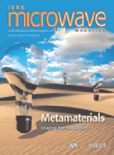
IEEE MICROWAVE MAGAZINE
Exploring the cutting-edge of microwave applications and theory.IEEE Microwave Magazine is a prestigious publication dedicated to advancing the field of microwave engineering, including theoretical developments and practical applications across various industries. Published by the IEEE-Institution of Electrical and Electronics Engineers, the magazine provides cutting-edge insights and comprehensive coverage of topics such as condensed matter physics, electrical and electronic engineering, and radiation, earning a notable Q2 ranking across these domains based on 2023 metrics. While it maintains traditional subscription access, the magazine's relevance is underscored by its substantial impact factor, making it a crucial resource for researchers, professionals, and students alike. With a commitment to fostering innovation and interdisciplinary collaboration, IEEE Microwave Magazine plays an essential role in broadcasting critical advancements and applications within the ever-evolving microwave technology landscape. This dynamic publication is designed to keep its audience informed and engaged, serving as a vital platform for the exchange of knowledge and ideas in this specialized field.
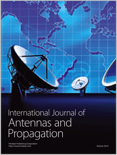
International Journal of Antennas and Propagation
Illuminating the path of antenna research and innovation.The International Journal of Antennas and Propagation, published by HINDAWI LTD, serves as a vital resource in the field of Electrical and Electronic Engineering, focusing specifically on advancements in antenna technology and propagation mechanisms. With an impact factor that reflects its academic rigor and relevance, this Open Access journal has been inviting submissions since 2007, ensuring that groundbreaking research is accessible to a global audience. Based in Egypt and distributed worldwide, the journal ranks in the Q3 category for Electrical and Electronic Engineering, situating it among the notable platforms for researchers seeking to disseminate their findings or stay abreast of the latest developments. It encompasses a wide scope, welcoming contributions that span theoretical studies, design innovations, and experimental validations, thereby fostering a comprehensive understanding of the subject. As it converges through the years from 2010 to 2024, the International Journal of Antennas and Propagation is a cornerstone for both emerging scholars and seasoned professionals aiming to enhance their knowledge and contribute to this dynamic field.

Visnyk NTUU KPI Seriia-Radiotekhnika Radioaparatobuduvannia
Shaping Tomorrow's Technologies TodayVisnyk NTUU KPI Seriia-Radiotekhnika Radioaparatobuduvannia is a distinguished open-access journal published by the National Technical University of Ukraine, Kyiv Polytechnic Institute. Since its inception in 2009, the journal has been a vital platform for disseminating innovative research findings in the fields of radio engineering, electronic technology, and the development of radio apparatus. With its commitment to providing unrestricted access to high-quality scientific content, the journal aims to foster collaboration and knowledge exchange among researchers, practitioners, and educators both in Ukraine and globally. While the journal's H-index and Scopus rankings are currently not provided, its growing reputation in the academic community is indicative of its impact in advancing technology and engineering practices. The journal's accessibility ensures that cutting-edge research is available to a wide audience, making it a crucial resource for professionals and students seeking to stay informed about the latest advancements in radio technology and engineering.

MICROWAVE JOURNAL
Exploring the Frontiers of Microwave TechnologyMicrowave Journal, published by Horizon House Publications Inc, is a well-established platform in the field of Electrical and Electronic Engineering, specifically focusing on the advancements and applications of microwave technology. Since its inception in 1969, the journal has consistently delivered high-quality research, making it an invaluable resource for professionals, researchers, and students alike. Despite its Q4 ranking in Scopus for 2023, the journal plays a crucial role in disseminating knowledge and fostering innovation within its niche, showcasing developments across various areas including microwave systems, components, and applications. Although it does not offer Open Access, the journal’s comprehensive insights and peer-reviewed articles are essential for anyone looking to deepen their understanding of microwave engineering. By maintaining a rigorous editorial standard, Microwave Journal continues to shape the discussion and evolution of microwave technology.
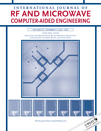
INTERNATIONAL JOURNAL OF RF AND MICROWAVE COMPUTER-AIDED ENGINEERING
Empowering Engineers with Cutting-Edge InsightsInternational Journal of RF and Microwave Computer-Aided Engineering, published by Wiley, is a leading peer-reviewed journal dedicated to advancing research in the realms of radio frequency, microwave engineering, and computer-aided design. With an ISSN of 1096-4290 and an E-ISSN of 1099-047X, this journal plays a pivotal role in the dissemination of innovative methodologies and state-of-the-art developments within these dynamic fields. Recognized within the Q3 category across three engineering and computer science domains as of 2023, it garners attention for its substantial contributions, ranking 40th among 106 in Computer Graphics and Computer-Aided Design and 327th among 797 in Electrical and Electronic Engineering according to Scopus metrics. Emphasizing its commitment to knowledge sharing, the journal provides a range of access options, including Open Access, to ensure the research is readily available to a global audience. Covering years from 1996 to 2024, the International Journal of RF and Microwave Computer-Aided Engineering continues to be an indispensable resource for researchers, professionals, and students in pursuit of excellence in engineering and applied sciences.